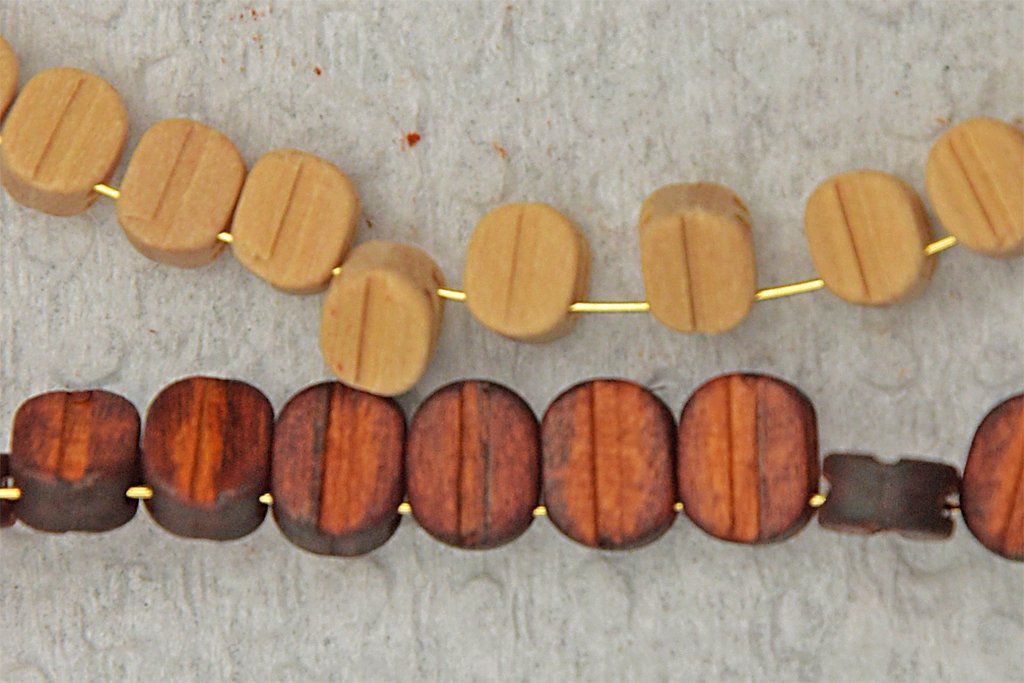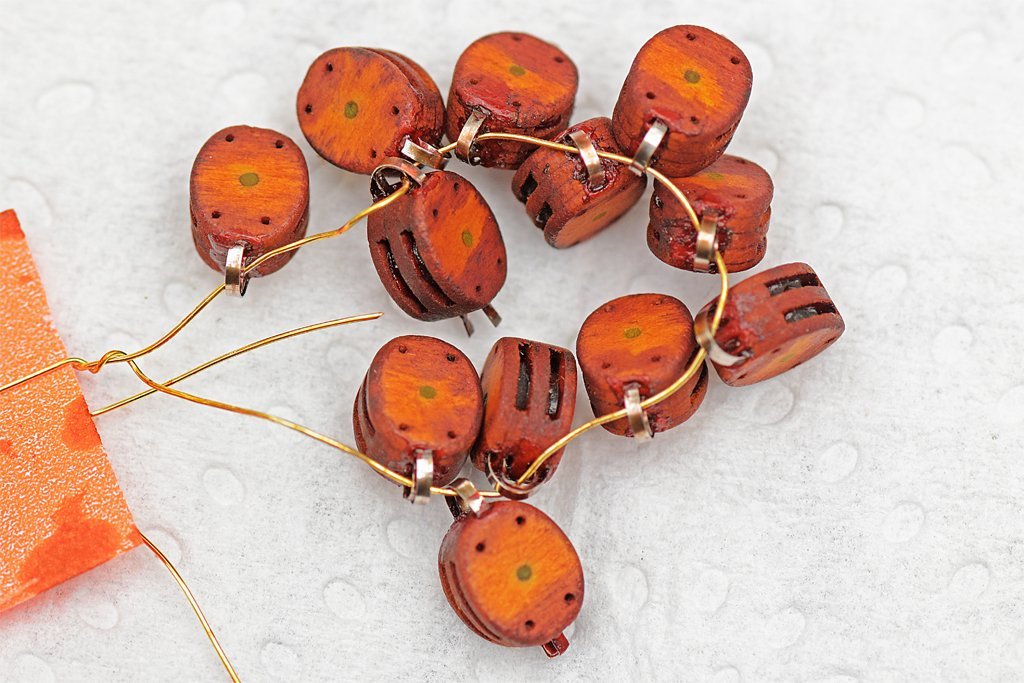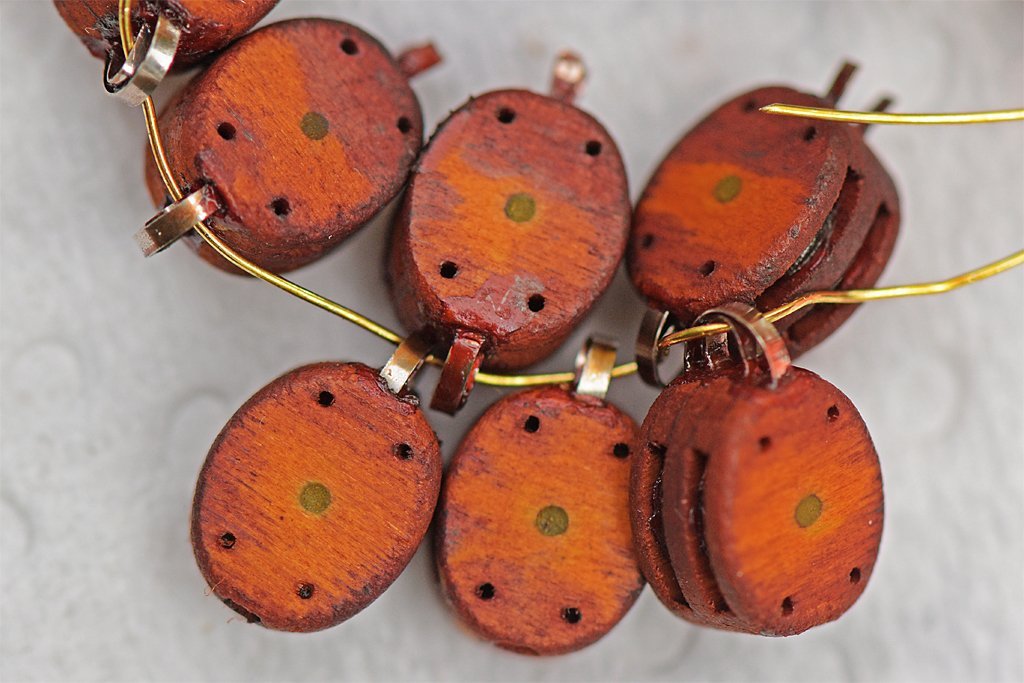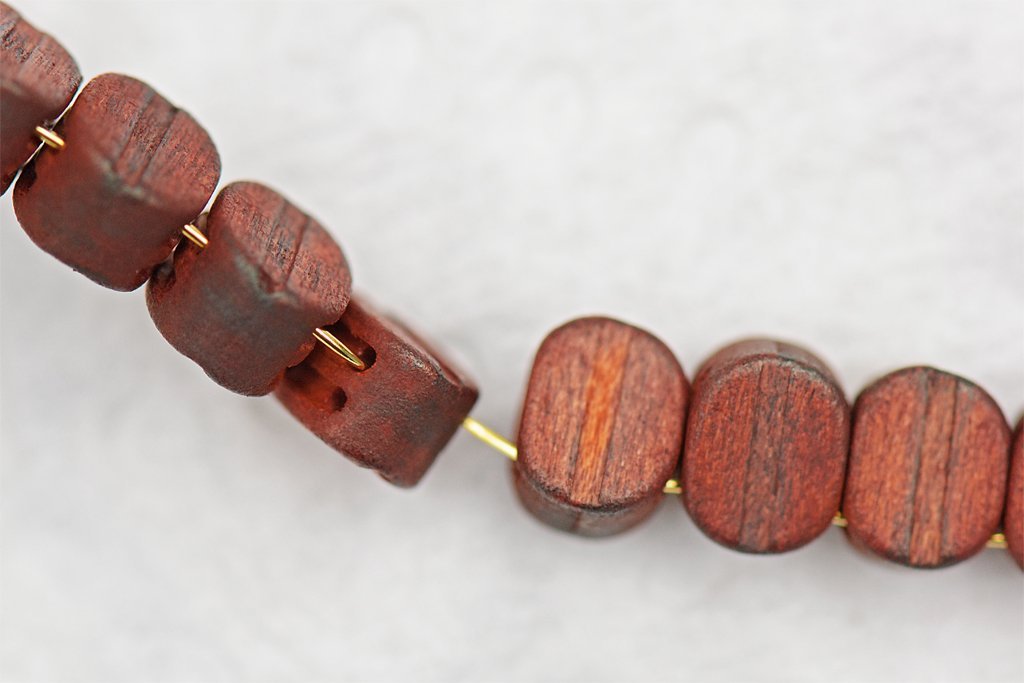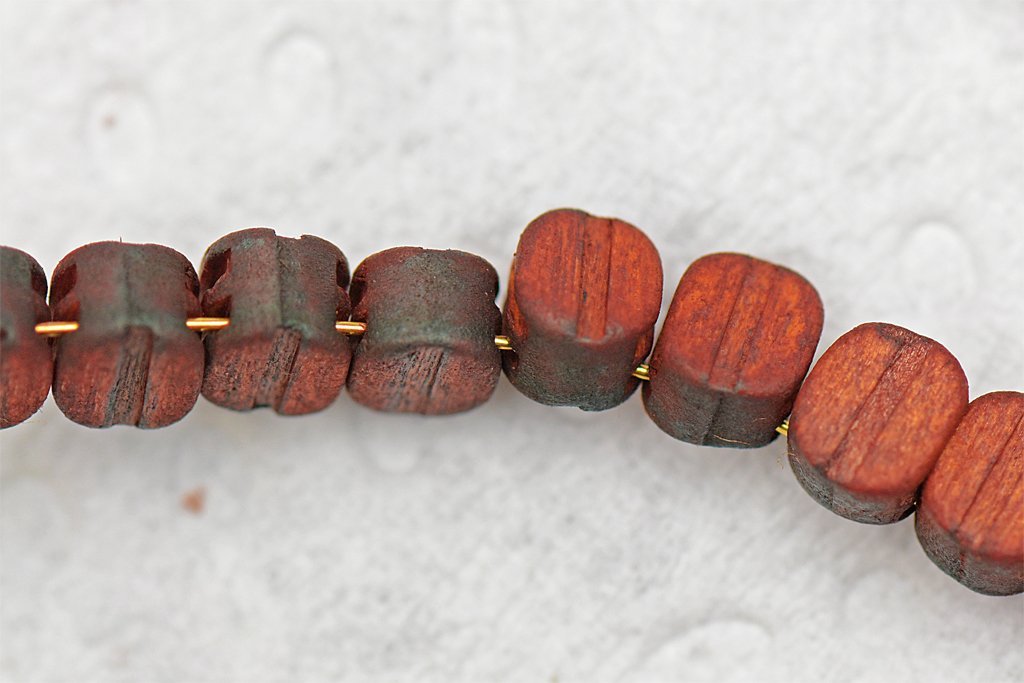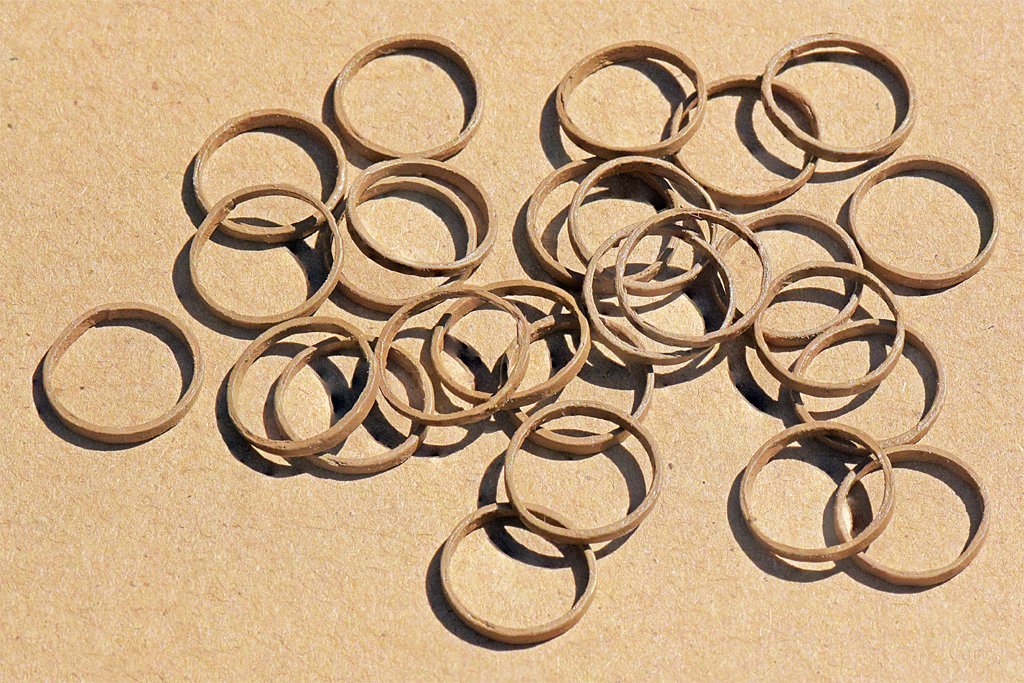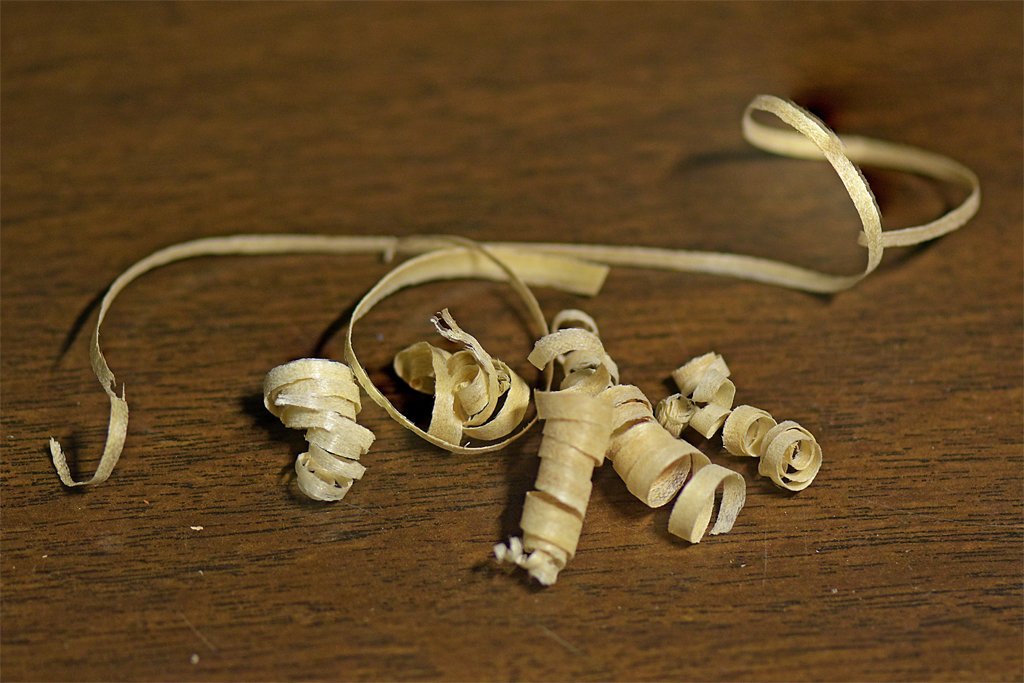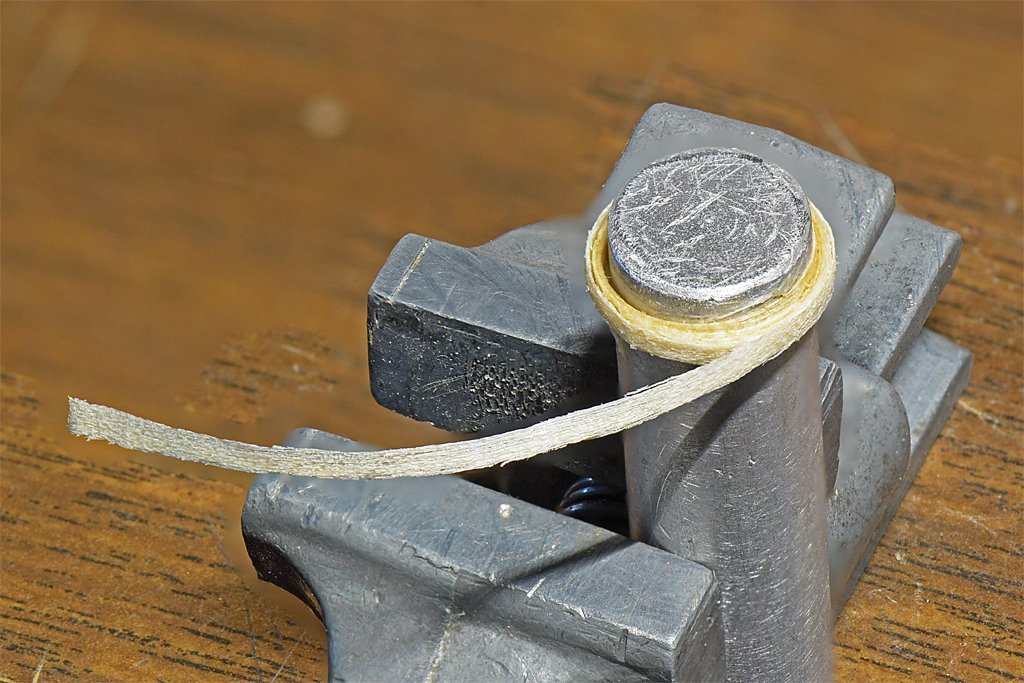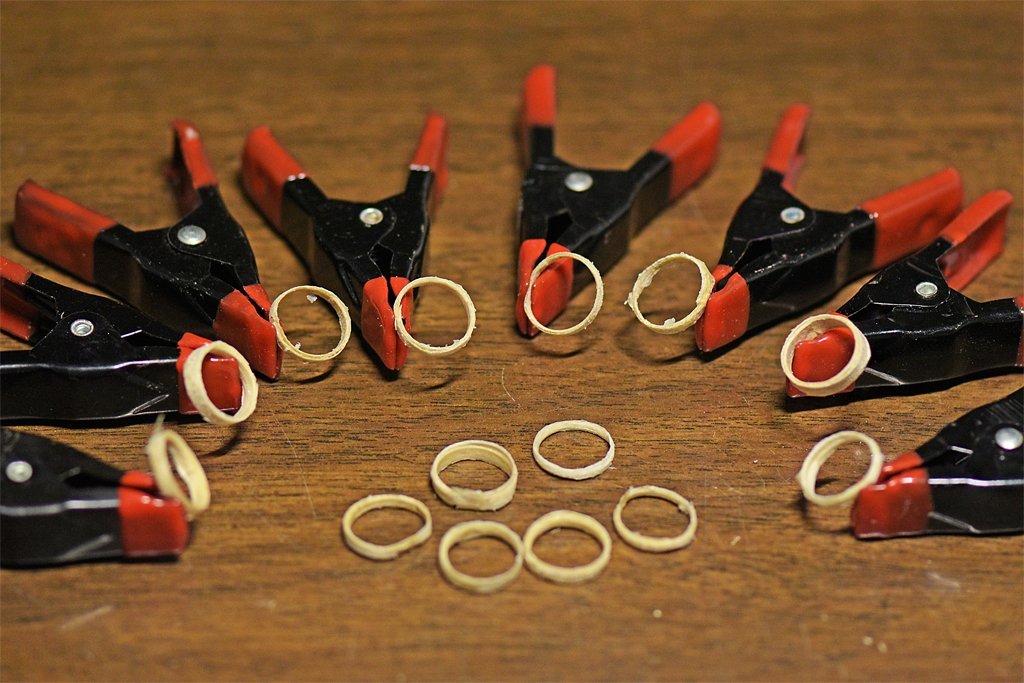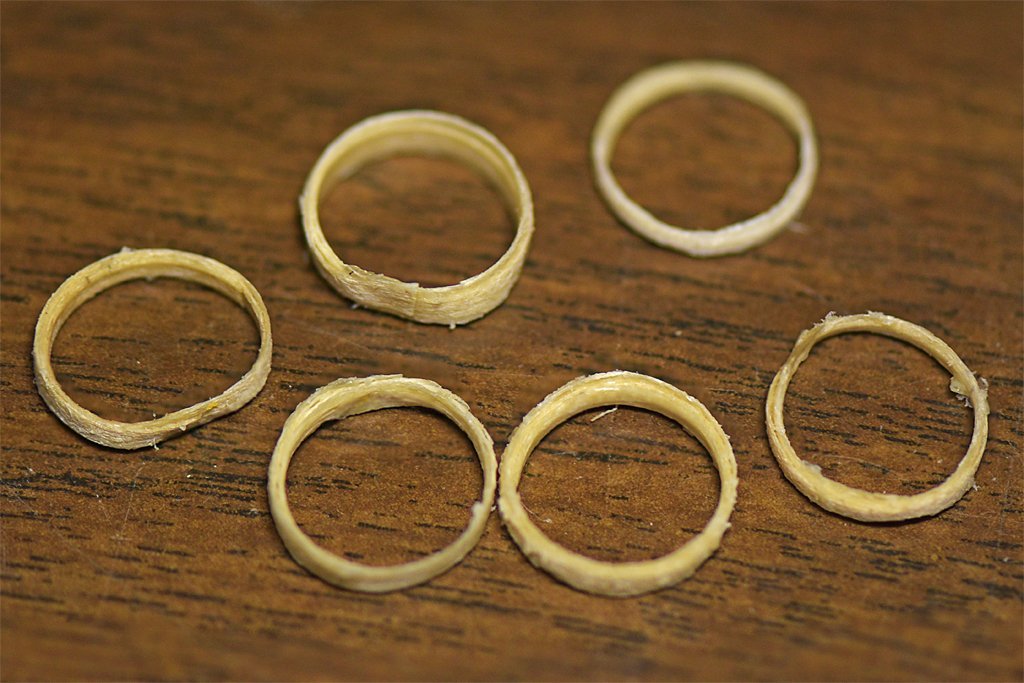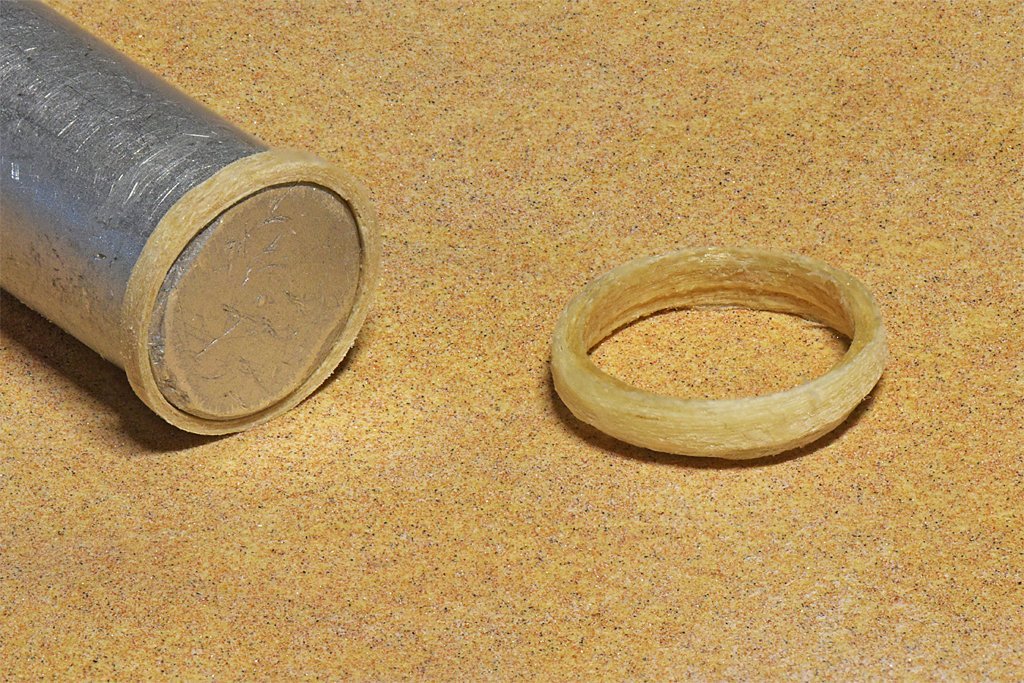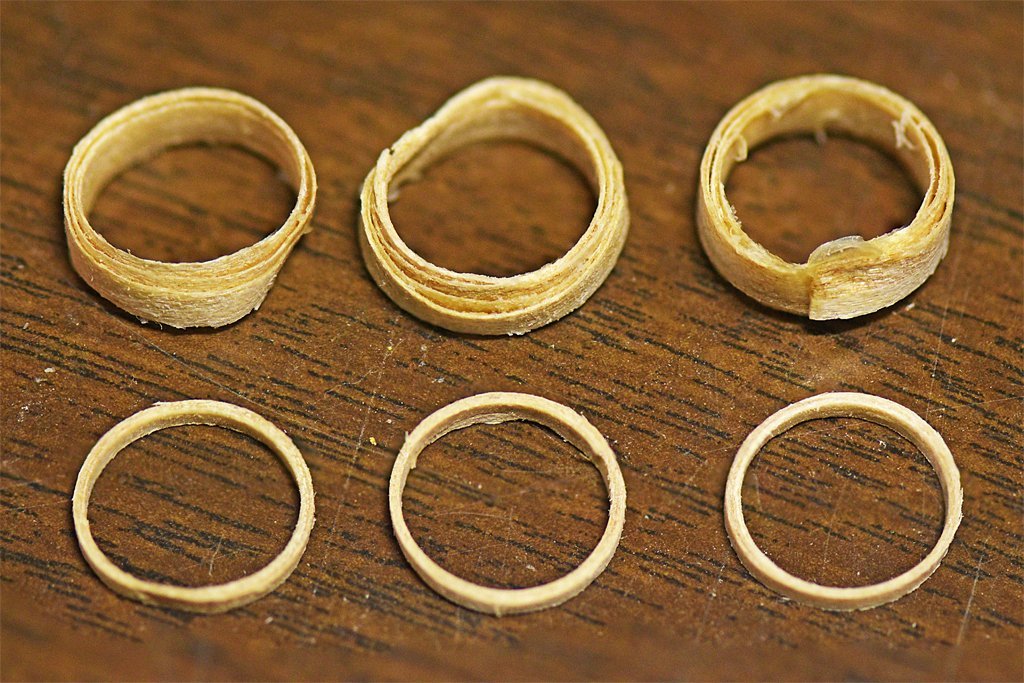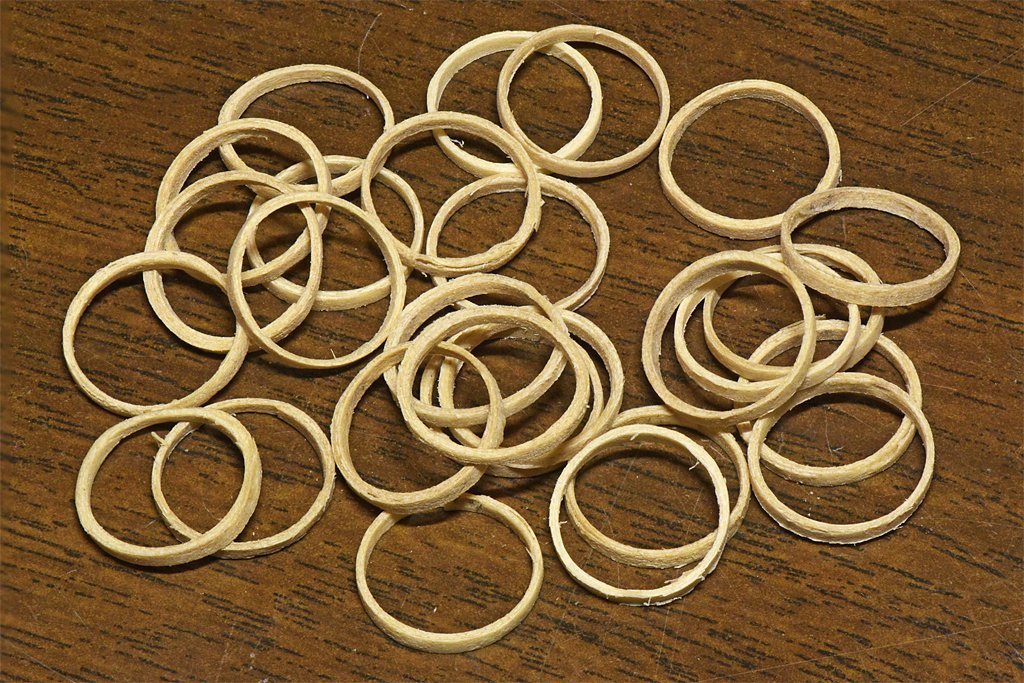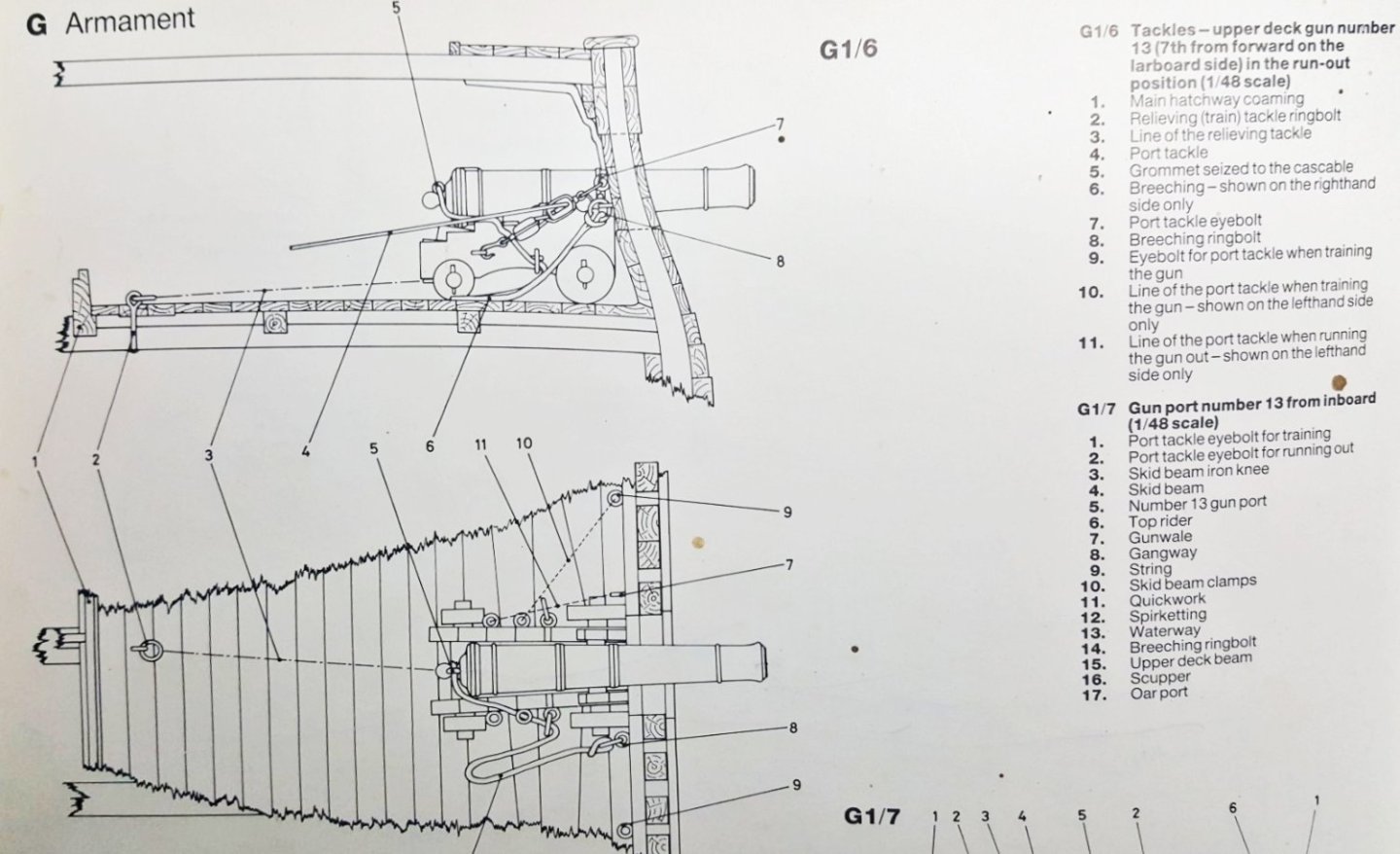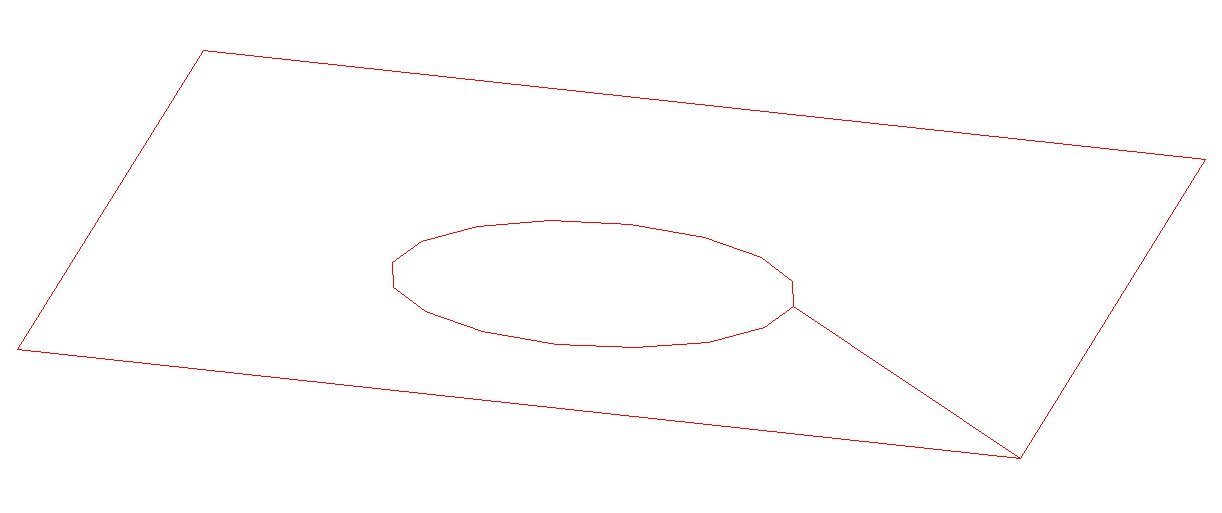-
Posts
2,402 -
Joined
-
Last visited
Content Type
Profiles
Forums
Gallery
Events
Everything posted by Dr PR
-
Chuck, Looking for hooks was my next chore. You solved that. I just ordered some. Now I have a question. Does anyone have a reference that tells the proper size of hooks to be used with blocks? Looking at illustrations it seems hooks are 1/2 to 2/3 the length of the block they are stropped to. But this is just guessing. Using this ratio, hooks for 3/32" (2.5 mm) blocks would be 2/32" or 1/16" long, or about 2 mm. Or the 3mm hooks would be good for 4 mm (5/32") to 6 mm (1/4") blocks. 5 mm hooks would be good for the larger blocks. Can you make 2mm blocks, and would they be too fragile to work with? I know the 3D printed parts I have worked with would be very fragile, but maybe parts cut from a plastic sheet would be tougher.
-
Gregory, Your blocks look very nice. The hooks are nice too. Where did you get them? Chuck, I haven't given up. I'll try an alcohol wipe to remove some stain and redistribute the remaining stain more evenly. It is your large blocks that are the greatest disappointment. They make such nice assemblies! I'll keep working on them. The stropping will cover some of the ends on the smaller blocks. This brings up a question - were the strops the light color of the running rigging, or dark (tarred) like the standing rigging?
-
Ferrus is right about the nautical jargon. Much of it is meaningless today. It originated in old European languages that no one speaks any more. Or as one fellow said "Shakespeare is impenetrable to the modern ear." A good reference is Falconer's"Universal Dictionary of the Marine" from 1769. You can find it on line as a PDF. Most naval jargon meant something in the day. But not everything. For example, the ship's galley smoke stack is called "Charlie Noble." This is true to this day on modern vessels. A century or two back there was this English merchant Captain named Charles Noble who was an obnoxious twit about polished brass. Everything made of brass on his ship had to be polished, and the smoke pipe from the galley was brass. Polished brass and salt spray are not a good combination, and the pipe had to be polished regularly. So Charlie's name is forever linked to the galley stack and meaningless work. I can relate to this. We had an obnoxious twit XO (Executive Officer - second in command) with a fetish for polished brass on one ship I served on. He walked around with a pocket knife scraping paint off every piece of metal he found, looking for painted brass. Woe be to the bosun in charge if he found painted brass! The crew had to follow him around and paint over his scrape marks to prevent rust and corrosion.
- 177 replies
-
- Perseverance
- Modellers Shipyard
-
(and 1 more)
Tagged with:
-
We had nice (dry) weather and I didn't have other pressing obligations so I finally got around to staining the blocks. I wanted them to look darker and more weathered than the natural castello boxwood light color. Following the advice of others on the forum I decided to use Fiebings Leather Dye to stain the blocks. I looked at all the color options and chose Light Brown. I thought Dark Brown would be too dark. I tested the dye on a piece of castello boxwood and it came out a medium reddish brown that looked OK. I also tested the dye on a string of very small blocks and they looked OK. I have 677 Syren blocks and hearts in 15 different sizes, and I didn't want to dump them in the dye all together. So I strung each type on 0.013" (0.33 mm) brass wire, with a tag telling what size each is. I stained the test piece of boxwood for 0, 1, 2 and 3 minutes before wiping the stain off. There was a slight darkening the longer the stain was left on the wood, but not much difference. I decided the shortest staining period was good enough. I dipped the strings of blocks in the dye and immediately shook off the excess and rubbed them with a cloth to remove excess dye. Here is a comparison of the unstained blocks on the top and the stained blocks below. I am very disappointed with the results! I have little experience with stains - and even less success! I guess I should have known that dying the blocks was a mistake. The flat faces of the blocks run with the grain, and stained OK, but unevenly. But the ends are cross grain and more porous, so they took up far too much stain. The result is almost black! The small blocks are basically UGLY! And the large blocks are even worse! In many cases the smooth faces of these blocks stained unevenly. Definitely not good! I will let the blocks dry a couple of days and see if they look any better. But right now it looks like I have ruined $150 of blocks. I guess I could soak them in alcohol to remove as much stain as possible, but that might loosen the aliphatic glue I used to assemble the larger blocks. If all else fails I can paint them - what I should have done in the first place! I think the suggestion to stain blocks is perhaps the worst idea ever imagined!
-
There is very little information about how masts were painted/coated in colonial America (or anywhere else for that matter). I have seen one reference saying that masts were painted - Nelson ordered rope wooldings and metal mast hoops around masts to be painted the same color as the masts to help distinguishing British ships from French ships at Trafalgar. So the Brits must have been painting their masts. Unfortunately, the reference didn't say what color the masts were painted. However you can bet the masts and spars were coated with something to prevent rot from exposure to water. And whatever coating was used it had to be something common and cheap. Other than that it was probably painted according to the ship owner's or Captain's preference. So it could be anything or any color. Mast tops, spars and bowsprits were often colored black in the late 1700s and early 1800s, probably because black paint was also used on the hulls. In the mid 1800s tops were often painted white - again because white paint on the hull came into fashion about that time. I have seen a reference that early American masts were painted straw color, and I have used that on my model of an early 1800s American schooner, with black tops. https://modelshipworld.com/topic/19611-albatros-by-dr-pr-mantua-scale-148-revenue-cutter-kitbash-about-1815/?do=findComment&comment=930171 I coated the masts and bowsprit with shellac to seal the wood and then used acrylic paint over that.
-

Helping hands troubles
Dr PR replied to VitusBering's topic in Modeling tools and Workshop Equipment
With anything that is adjustable you have to allow for spring back, backlash, slop - whatever you want to call it. With the quad hands I bend the arms farther than I need and allow them to spring back before I try to position them. I also have a ball joint version as shown above, and it is a pain in the posterior to adjust. The problem is the cheap thumb screw set screws that press directly onto the horizontal bar and the alligator clips. When these are tightened that cut into the metal they press against, deforming it. This puts pits and dents in the metal so the next time you try to tighten the screws the bar/clip rotates so the screw fits into the deformities. After a few uses it becomes very difficult to set the position accurately. And then it isn't very firm so things slip out of place. So you tighten the set screws tighter, and create greater deformities that cause even greater problems later. Neither of these devices hold pieces firmly enough to resist much pressure from a soldering iron tip. It takes a lot of practice and patience to use them. But both can be useful. -
One thing I have learned from studying sailing ships is that there often are several "right" ways to do things. I suspect how the cannon carriages were constructed varied from owner to owner, shipyard to shipyard and by nationality. For example, so far I have found at least eight ways to rig a schooner's main gaff topsail. One ship I was on in the Navy had an extra pair of bitts. None of the other 26 vessels of the class had them. If the ship's bosun decided he needed another cleat somewhere the ship fitters came up and welded another one in place. And that is in a modern navy that had "rules." In earlier times the ship's Captain could have anything changed to suit his preferences.
-
Isaiah, You can edit your posts after you have saved them. Click on the three dots at the upper right and select "Edit." If you click on an image after you put it in your post a window opens with several options. You can change the size of the image, assign it to the left or right margin (or none) and change the aspect ratio. This will let you post two smaller pictures side by side or have text beside the photos. However, this can be tricky and you will have to experiment. It is a good idea to add a blank line or two before and after photos to be sure text is not wrapped around pictures. Unfortunately the layout you see while editing is not what the saved post will look like. You will see the actual layout only after you save your post. Sometimes you may screw up and close the post before you are done. As long as you are still logged in the forum will save your "unsaved" post. Just start a new post and your earlier text and photos should reappear. However, this doesn't always work so I copy my text occasionally and paste it into Notepad or another text editor just to be safe.
-
Isaiah, Very nice work, especially for a first build! I don't know how you managed to bend the walnut around the tuck at the stern! Most experienced modelers do not consider walnut to be a good wood to work with because it is so brittle and splits! As far as I can tell the only thing wrong you are doing is worrying about doing it wrong!
- 177 replies
-
- Perseverance
- Modellers Shipyard
-
(and 1 more)
Tagged with:
-
I think they usually rested in hemispherical pockets in the boards. Gravity held them in place. Although they are often seen for show I suspect the cannonballs were normally stowed below decks to keep them dry and prevent rusting. They would be carried up to the racks on deck as the vessel prepared for action.
-
Allan, It was a tongue-in-cheek reference to times past when in my childhood many American companies "proudly" claimed their products were "Made in the U. S. A." - as opposed to inferior foreign made products. Of course now all products of American companies are made in China (although the marketing types don't proudly boast of this). But my mast hoops actually were made in the USA. Of course this method - or any other modelling method - will work anywhere there is someone capable of doing it.
-
I decided to take a little time and touch up the hoops. The narrow parts were about 0.020" thick so there was extra material to be removed from the thicker spots (radial). I used a small file to take off the high spots around the loops. I also filed material from the vertical parts to get more even 0.050" height. Then I applied two coats of the brown paint I used for the bulwarks and deck furniture. After this was dry I buffed the pieces with #0000 steel wool. So here are the 26 finished mast hoops. Carefully hand crafted individually produced (none of those mass produced parts) wooden mast hoops made in the USA!
-
George, Thanks. I considered using paper. I think it certainly is easier, and you really can't tell what material is being used, especially if you paint the hoops. And the paper hoops will not be brittle and prone to breaking as 3D printed hoops will be.
-
Bob, Great suggestions. Thanks! I can see how your method would produce more uniform hoops and the radial thickness should be more uniform. I remembered your post, and as I was shaving wood from the dowel I thought I would try to use it for the hoops. Next time I will try your method. For what it is worth, the aliphatic glue did not stick to the aluminum knife handle mandrel, but I didn't leave the hoops on the mandrel until the glue set up. I should add that I broke a few of the hoops with too aggressive sanding when I was reducing the vertical height. However, the laminated hoops are very tough considering they are only 0.020" (0.5 mm) thick (give or take a few thousandths). No need to worry about breaking them while rigging the sails!
-
Things slowed down enough that I found some time to work on the model. I made some mast hoops. I need 26 hoops total. There are 11 on both masts to attach the gaff sails, and two spares on each mast. I have looked at metal rings used in jewelry making but they were the wrong size. I thought about making metal rings, but real hoops appear to be rectangular in cross section. I used a technique that I saw on a post on the forum. Sorry I don't recall who came up with this idea, but I thought I would give it a try. Howard Chapelle's "The American Fishing Schooner" (W. W. Norton & Company, New York, 1973) shows how mast hoops were made in the Notebook section on page 555. The diameter of the hoops is about 125% of the mast diameter. He gives examples of the proportions of several hoops. Using the proportions from Chapelle and the diameters of the masts on the model I decided to make the hoops 0.420" (10.7 mm) inside diameter, 0.020" (0.5 mm) thick (radial) and 0.050" (1.25 mm) high (vertical). I started with some wood shavings that I got when I made the masts. I shaved a square dowel to get an octagonal shape, and saved the thin wood strips. They were about 0.005" (0.13 mm) to 0.007" (0.18 mm) thick. I needed a mandrel to wrap the shavings around so I looked for something that was 0.420 inches diameter. The handle of a large hobby knife was 0.4225 inches - close enough. I applied SIG Sig-bond aliphatic resin glue to the wood strips with a paint brush First the strip was wrapped one turn around the mandrel and then I started brushing on the glue as I continued wrapping the strip to form laminated layers (like the real hoops are made). I needed more than 0.020" thickness and found that something like a 0.030" thick lamination (4-5 turns) was a good thickness to work with. Note: I got best results when I started with an end of the strip that tapered to zero thickness - like you get at the end of the shaving stroke. You could also just use sandpaper to taper the end of the strip. This avoids having a "step" or void at the end of the strip on the inside of the hoop. The aliphatic resin may not have been the best choice. It doesn't set up quickly so the strips tried to unwind. I used small clamps to hold the ends in place until the glue set. This did distort the rings a bit, but that was easy to fix later. I had best results working with them after the glue had set over night. The resulting hoops were pretty crude looking. Next I sanded the hoops to about twice (0.1") the desired vertical height on coarse sandpaper. This cleaned up the ragged edges a bit. Then I slipped the hoops over the end of the mandrel and placed the mandrel flat on the sandpaper and rotated it to sand down the outside edges as shown in this next picture. I occasionally slipped the hoop off the mandrel and measured the thickness (radial) with a micrometer. I repeated this until the thickness was close to the desired thickness (0.020"). I removed the hoop from the mandrel and finished sanding the vertical height to about 0.050". The picture on the right shows three of the original laminations on top and three finished hoops on bottom. After two days work I had 27 usable mast hoops and 7 failures (most broke while I was sanding them). Look closely and you will see they aren't perfect. I didn't taper the starting ends on some so there is a thin place where the second layer overlaps it. The thickness isn't uniform around all of them - I may correct this later. But I think they will work. I will sort them into two groups with similar thicknesses and heights for the two masts so the differences won't be noticeable.
-
I found two images that are posted elsewhere in the forum in discussions about gun carriages. This picture shows the two rings. The forward ring is for the training tackle (9), and the aft ring is for the outhaul tackle (7). I didn't record the source, but perhaps someone will recognize it. This drawing also shows the two rings and labels them "gun tackle loops). Again, I do not have a reference. Both drawings are for the "English" style carriage with the breech rope around the cascobel/button or through a ring on the rear of the cannon.
-

HMS EURYALUS by Matiz - FINISHED - scale 1:56
Dr PR replied to matiz's topic in - Build logs for subjects built 1801 - 1850
Very nice work! -
I recall seeing a bottle of Radium salts emulsion that you were supposed to drink for upset stomach - about 1915. But Radium taken orally causes stomach cancer. Before the Food and Drug Administration was established a lot of useless and dangerous "medicines" were sold. I remember when the FDA stopped the sale of Carter's Little Liver Pills. Research showed they did nothing for the liver. My favorite was "Qzarko." I remember it from my childhood. It was a black foul smelling liquid that was an instant cure for athlete's foot, ringworm and other skin fungal infections. It was a mixture of coal tar in rubbing alcohol that was bottled in my home town. I always imagined some guy stirring it with a 2x4 in a 50 gallon drum in his basement. Coal tar is a very effective antimicrobial agent, but, unfortunately, it causes cancer.
-
Bob, While the board feet in the log might not be worth $100,000, by the time they go through the selection process, then get a long log like that into the shop and do the processing into a mast the total cost might well be that high.
-
Bob, Your "big prime Doug fir" in the photo in post #19 appears to be only about 3 feet diameter. When I moved to Oregon in the 1970s loggers scoffed at such "toothpicks" - they weren't worth bothering with. A really BIG Douglas fir was about 15-17 feet diameter. Each piece was hauled out of the forest on a single railroad car. We used to see a single tree going down the road on three log trucks. One carried the huge base. The next carried the large second piece an perhaps the top. And the third truck carried two to four pieces from just below the top. But now they have cut most of the big trees, and what few are left are locked up in wilderness areas. Now we see trucks loaded with dozens of sticks less than a foot diameter. They are chipped to make "oriented strand board," a fancy term for garbage. A 120 foot long 3 foot diameter log has about 10,000 board feet. Douglas fir is currently selling at about $700-$800 per thousand board feet (milled). So an ordinary log that size would sell for less than $7000 to $8000. However, there is a premium paid for long poles (they are really difficult to get out of the forest on typical sharp curved logging roads). And really clear logs from trees with no lower limbs (knots) bring a high price for making plywood veneer (I worked many years automating plywood lathes). A $100,000 tree would be VERY special!
-
Perhaps they were belaying points to accept hooks on the mast tackle?
-
pocojo, As Allan said, Howard Chapelle's "The American Fishing Schooners 1825-1935" (W. W. Norton & Company, New York, 1973) is the best reference for schooners like Bluenose. It has 370 pages of illustrated notes describing in detail the small features of these vessels. There are also several Bluenose builds on the forum where you can see the problems and solutions others have found. If you are looking for general terminology and other information about schooner rigs I have posted some information here: https://modelshipworld.com/topic/25679-topsail-schooner-sail-plans-and-rigging/?do=findComment&comment=750865
-
I am surprised that Netfabb has those file name errors. When I first used it (many years ago) it was not from AutoDesk. I can believe AutoDesk hasn't bothered to fix the file name errors - just milk it for all the cash it can bring in with minimal expense to maintain. I suspect it is the parentheses in the file names that causes the problem in Windows. I have used hyphens in file names many times. Microsoft's 3D Builder is easier to use, but it doesn't offer as many options (or need as many menus, pop-up windows, etc.) However, the user interface is pretty strange, unlike any other program I have seen on any operating system. It takes some getting used to. After 3D Builder repairs the file I just save it under the same STL file name to eliminate the unrepaired version. I rescale files in the slicer program (Chitubox). **** The only problem I have found that 3D Builder cannot repair is zero thickness surfaces within openings that should penetrate the part. This is a problem with the DesignCAD program I use - it thinks the interior of the holes does not exist. I eventually discovered it is due to the way DesignCAD defines surfaces with openings in them. It creates a plane with a hole in it by wrapping the outer edge in and around the hole and back as shown below. This surface has only one "outer" edge (the visible line), and apparently that isn't legal in STL files. So 3D Builder just makes a rectangular plane that fills in the hole. The solution is just to not do this in your files. You need two or more separate planes wrapping around the hole - with no one plane wrapping around more than half the hole. It's all part of the joy of 3D printing!
About us
Modelshipworld - Advancing Ship Modeling through Research
SSL Secured
Your security is important for us so this Website is SSL-Secured
NRG Mailing Address
Nautical Research Guild
237 South Lincoln Street
Westmont IL, 60559-1917
Model Ship World ® and the MSW logo are Registered Trademarks, and belong to the Nautical Research Guild (United States Patent and Trademark Office: No. 6,929,264 & No. 6,929,274, registered Dec. 20, 2022)
Helpful Links
About the NRG
If you enjoy building ship models that are historically accurate as well as beautiful, then The Nautical Research Guild (NRG) is just right for you.
The Guild is a non-profit educational organization whose mission is to “Advance Ship Modeling Through Research”. We provide support to our members in their efforts to raise the quality of their model ships.
The Nautical Research Guild has published our world-renowned quarterly magazine, The Nautical Research Journal, since 1955. The pages of the Journal are full of articles by accomplished ship modelers who show you how they create those exquisite details on their models, and by maritime historians who show you the correct details to build. The Journal is available in both print and digital editions. Go to the NRG web site (www.thenrg.org) to download a complimentary digital copy of the Journal. The NRG also publishes plan sets, books and compilations of back issues of the Journal and the former Ships in Scale and Model Ship Builder magazines.




